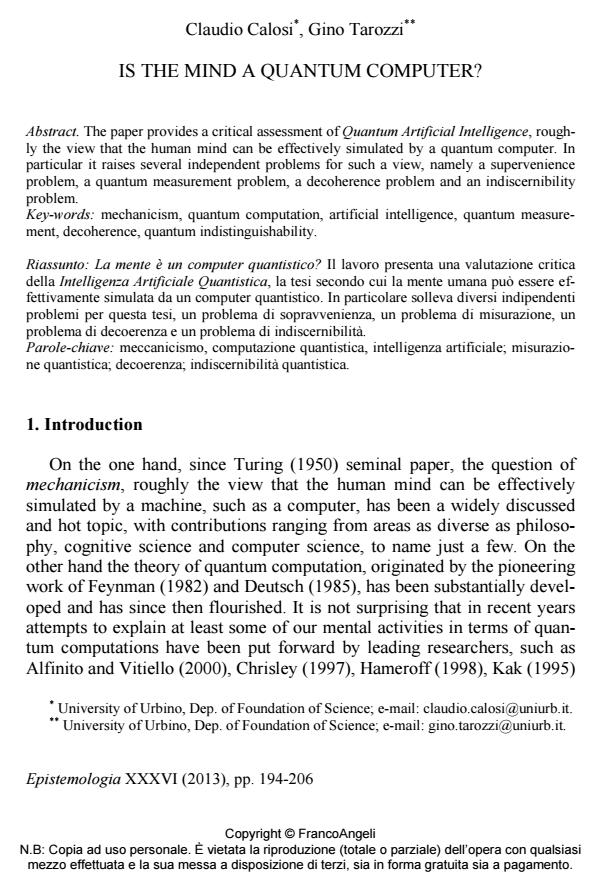Is the mind a quantum computer?
Journal title EPISTEMOLOGIA
Author/s Claudio Calosi
Publishing Year 2014 Issue 2013/2
Language English Pages 13 P. 194-206 File size 620 KB
DOI 10.3280/EPIS2013-002002
DOI is like a bar code for intellectual property: to have more infomation
click here
Below, you can see the article first page
If you want to buy this article in PDF format, you can do it, following the instructions to buy download credits

FrancoAngeli is member of Publishers International Linking Association, Inc (PILA), a not-for-profit association which run the CrossRef service enabling links to and from online scholarly content.
The paper provides a critical assessment of Quantum Artificial Intelligence, roughly the view that the human mind can be effectively simulated by a quantum computer. In particular it raises several independent problems for such a view, namely a supervenience problem, a quantum measurement problem, a decoherence problem and an indiscernibility problem.
Keywords: Mechanicism, quantum computation, artificial intelligence, quantum measurement, decoherence, quantum indistinguishability
Claudio Calosi, Is the mind a quantum computer? in "EPISTEMOLOGIA" 2/2013, pp 194-206, DOI: 10.3280/EPIS2013-002002